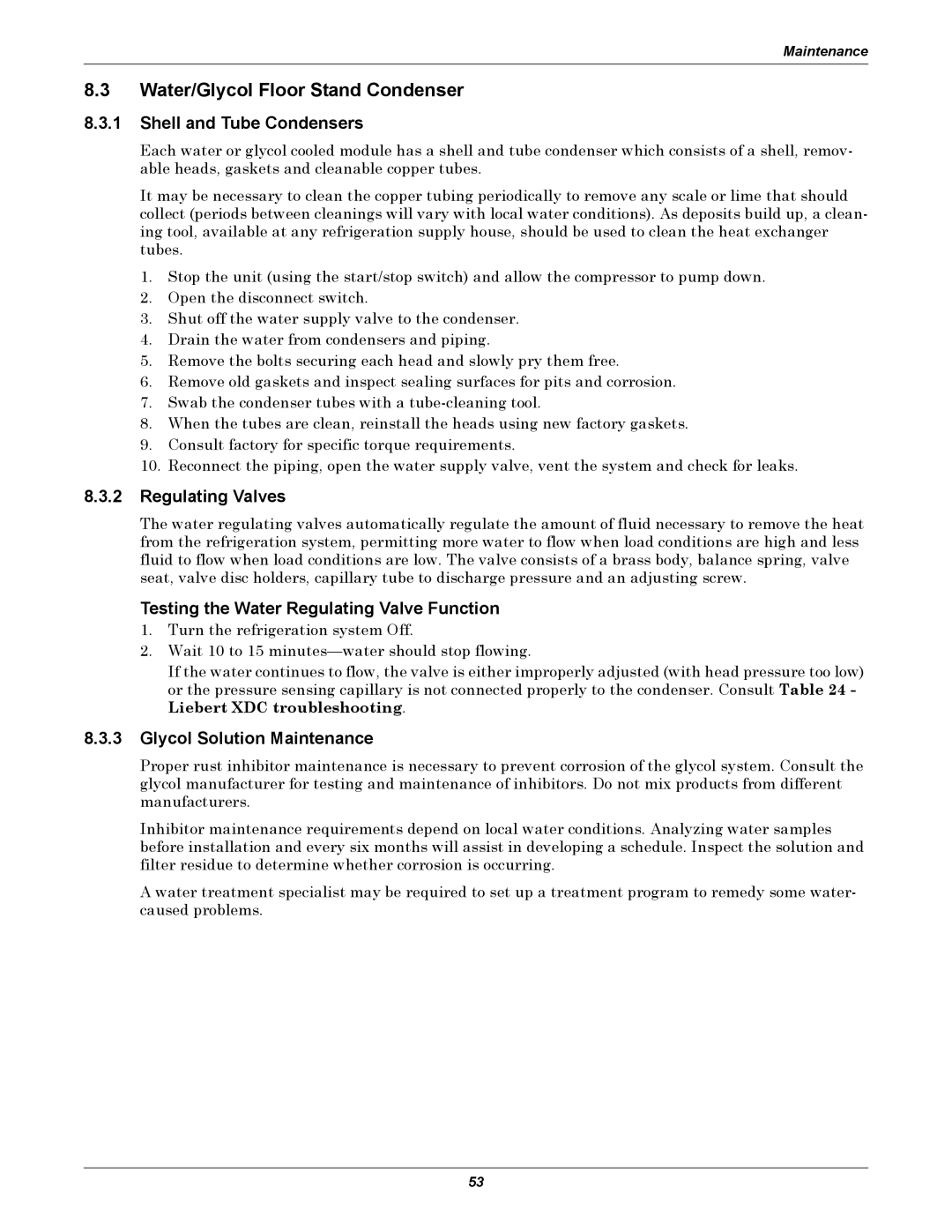
Maintenance
8.3Water/Glycol Floor Stand Condenser
8.3.1Shell and Tube Condensers
Each water or glycol cooled module has a shell and tube condenser which consists of a shell, remov- able heads, gaskets and cleanable copper tubes.
It may be necessary to clean the copper tubing periodically to remove any scale or lime that should collect (periods between cleanings will vary with local water conditions). As deposits build up, a clean- ing tool, available at any refrigeration supply house, should be used to clean the heat exchanger tubes.
1.Stop the unit (using the start/stop switch) and allow the compressor to pump down.
2.Open the disconnect switch.
3.Shut off the water supply valve to the condenser.
4.Drain the water from condensers and piping.
5.Remove the bolts securing each head and slowly pry them free.
6.Remove old gaskets and inspect sealing surfaces for pits and corrosion.
7.Swab the condenser tubes with a
8.When the tubes are clean, reinstall the heads using new factory gaskets.
9.Consult factory for specific torque requirements.
10.Reconnect the piping, open the water supply valve, vent the system and check for leaks.
8.3.2Regulating Valves
The water regulating valves automatically regulate the amount of fluid necessary to remove the heat from the refrigeration system, permitting more water to flow when load conditions are high and less fluid to flow when load conditions are low. The valve consists of a brass body, balance spring, valve seat, valve disc holders, capillary tube to discharge pressure and an adjusting screw.
Testing the Water Regulating Valve Function
1.Turn the refrigeration system Off.
2.Wait 10 to 15
If the water continues to flow, the valve is either improperly adjusted (with head pressure too low) or the pressure sensing capillary is not connected properly to the condenser. Consult Table 24 - Liebert XDC troubleshooting.
8.3.3Glycol Solution Maintenance
Proper rust inhibitor maintenance is necessary to prevent corrosion of the glycol system. Consult the glycol manufacturer for testing and maintenance of inhibitors. Do not mix products from different manufacturers.
Inhibitor maintenance requirements depend on local water conditions. Analyzing water samples before installation and every six months will assist in developing a schedule. Inspect the solution and filter residue to determine whether corrosion is occurring.
A water treatment specialist may be required to set up a treatment program to remedy some water- caused problems.
53
